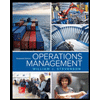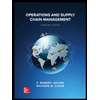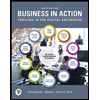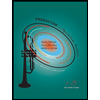IBM is considering a new expansion project and the finance staff has received information summarized below. The project require IBM to purchase $900.000 of equipment in 2013 (t=0). Inventory will increase by $175,000 and accounts payable will rise by $75.000. The project will last for four years. The company forecasts that they will sell 2.000.000 uni in 2014, 2.500.000 units in 2015, 2,500,000 units in 2016, and 2.400.000 units in 2017. Each unit will sell for $2 in 2014, $3 in 2015, $2.5 in 2016 and $2 in 2017. The fixed cost of producing the product is $2 million each year. The variable cost of producing each unit will rise from $1.05, $1.03, $1.4 and $1.05 from 2014 to 2017 respectively. The equipment will be depreciated under the MACRS system using the applicable rates of 33%, 45%, 15%, and 7% respectively When the project is completed in 2017 (t=4), the company expects that it will be able to salvage the equipment for $100,000, and it expects that it will fully recover the NWC. • The estimated tax rate is 40%. Based on the perceived risk, the project's WACC is estimated to be 10%. Your main task is to and evaluate the cash flows, analyze the results, and present your recommendations. To help in the analysis, answer all the following questions:
IBM is considering a new expansion project and the finance staff has received information summarized below. The project require IBM to purchase $900.000 of equipment in 2013 (t=0). Inventory will increase by $175,000 and accounts payable will rise by $75.000. The project will last for four years. The company forecasts that they will sell 2.000.000 uni in 2014, 2.500.000 units in 2015, 2,500,000 units in 2016, and 2.400.000 units in 2017. Each unit will sell for $2 in 2014, $3 in 2015, $2.5 in 2016 and $2 in 2017. The fixed cost of producing the product is $2 million each year. The variable cost of producing each unit will rise from $1.05, $1.03, $1.4 and $1.05 from 2014 to 2017 respectively. The equipment will be depreciated under the MACRS system using the applicable rates of 33%, 45%, 15%, and 7% respectively When the project is completed in 2017 (t=4), the company expects that it will be able to salvage the equipment for $100,000, and it expects that it will fully recover the NWC. • The estimated tax rate is 40%. Based on the perceived risk, the project's WACC is estimated to be 10%. Your main task is to and evaluate the cash flows, analyze the results, and present your recommendations. To help in the analysis, answer all the following questions:
Practical Management Science
6th Edition
ISBN:9781337406659
Author:WINSTON, Wayne L.
Publisher:WINSTON, Wayne L.
Chapter2: Introduction To Spreadsheet Modeling
Section: Chapter Questions
Problem 20P: Julie James is opening a lemonade stand. She believes the fixed cost per week of running the stand...
Related questions
Question

Transcribed Image Text:Fin 30
atem
Assignment due on Friday 2005
IBM is considering a new expansion project and the finance staff has received information
summarized below.
The project require IBM to purchase $900,000 of equipment in 2013 (t=0).
Inventory will increase by $175,000 and accounts payable will rise by $75,000.
The project will last for four years. The company forecasts that they will sell 2.000,000 units
in 2014, 2,500,000 units in 2015, 2,500,000 units in 2016, and 2.400,000 units in 2017.
Each unit will sell for $2 in 2014, $3 in 2015, $2.5 in 2016 and $2 in 2017.
The fixed cost of producing the product is $2 million each year.
The variable cost of producing each unit will rise from $1.05, $1.03, $1.4 and $1.05 from
2014 to 2017 respectively.
The equipment will be depreciated under the MACRS system using the applicable rates of
33%, 45%, 15%, and 7% respectively
When the project is completed in 2017 (t=4), the company expects that it will be able to
salvage the equipment for $100,000, and it expects that it will fully recover the NWC.
The estimated tax rate is 40%.
Based on the perceived risk, the project's WACC is estimated to be 10%.
Your main task is to and evaluate the cash flows, analyze the results, and present your
recommendations. To help in the analysis, answer all the following questions:
Note: Create tables to do this problem:
1. What is the total equipment cost at the start?
2. What is the depreciation amount for each year?
Create a depreciation schedule on a table
3. Calculate the Net Income for years
4. Calculate the Operating Cash Flow for each year
2012
Expert Solution
This question has been solved!
Explore an expertly crafted, step-by-step solution for a thorough understanding of key concepts.
This is a popular solution!
Trending now
This is a popular solution!
Step by step
Solved in 2 steps with 2 images

Recommended textbooks for you

Practical Management Science
Operations Management
ISBN:
9781337406659
Author:
WINSTON, Wayne L.
Publisher:
Cengage,

Operations Management
Operations Management
ISBN:
9781259667473
Author:
William J Stevenson
Publisher:
McGraw-Hill Education

Operations and Supply Chain Management (Mcgraw-hi…
Operations Management
ISBN:
9781259666100
Author:
F. Robert Jacobs, Richard B Chase
Publisher:
McGraw-Hill Education

Practical Management Science
Operations Management
ISBN:
9781337406659
Author:
WINSTON, Wayne L.
Publisher:
Cengage,

Operations Management
Operations Management
ISBN:
9781259667473
Author:
William J Stevenson
Publisher:
McGraw-Hill Education

Operations and Supply Chain Management (Mcgraw-hi…
Operations Management
ISBN:
9781259666100
Author:
F. Robert Jacobs, Richard B Chase
Publisher:
McGraw-Hill Education


Purchasing and Supply Chain Management
Operations Management
ISBN:
9781285869681
Author:
Robert M. Monczka, Robert B. Handfield, Larry C. Giunipero, James L. Patterson
Publisher:
Cengage Learning

Production and Operations Analysis, Seventh Editi…
Operations Management
ISBN:
9781478623069
Author:
Steven Nahmias, Tava Lennon Olsen
Publisher:
Waveland Press, Inc.